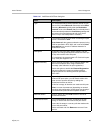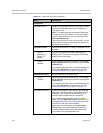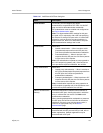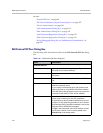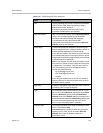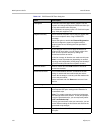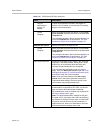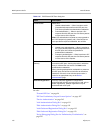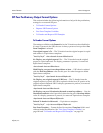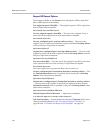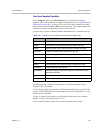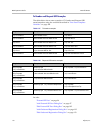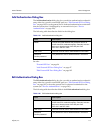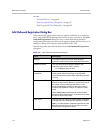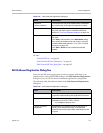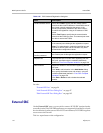
External SIP Peer Device Management
Polycom, Inc. 107
SIP Peer Postliminary Output Format Options
This section includes the following information to help with the postliminary
settings for an external SIP peer:
• To Header Format Options
• Request-URI Format Options
• Free Form Template Variables
• To Header and Request-URI Examples
To Header Format Options
The settings available on the Format list for the To header are described below.
If a user is present in the URI, the user is always preserved except when Free
Form Template is selected.
Use original request’s To — The To header from the original request is copied
and used as is. Equivalent to template:
"#otdisplay#" <#otscheme#:#otuser#@#othost#>
No Display, use original request’s To — The To header from the original
request is copied and used. If a display parameter is present, it’s removed.
Equivalent to template:
<#otscheme#:#otuser#@#othost>
With Display, use peer’s next hop address as host — URI’s host is replaced
with the Next hop address value for this peer. No other changes are made.
Equivalent to template:
"#otdisplay#" <#pscheme#:#otuser#@#phost#>
No Display, use original request’s URL host — The To header from the
original request is copied, the URI is replaced with the host/IP portion of the
original request’s Request-URI. If a display parameter is present, it’s removed.
Equivalent to template:
<#pscheme#:#otuser#@#orhost#>
No Display, use peer’s Destination Network or next hop address — Uses the
Destination network value if specified, otherwise the peer’s Next hop address
value. If a display parameter is present, it’s removed. Equivalent to template:
<#pscheme#:#otuser#@#pnetORphost#>
Default To header for Microsoft. — Equivalent to template:
"#otdisplay#" <sip:#otuser#@#pnetORphost#>
Free Form Template — Format defined in associated Template field is used
without further modification. See “Free Form Template Variables” on
page 109 and “To Header and Request-URI Examples” on page 110.



